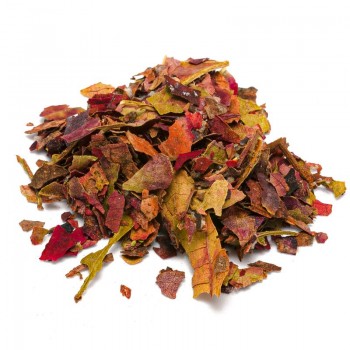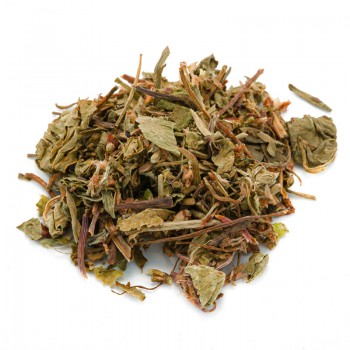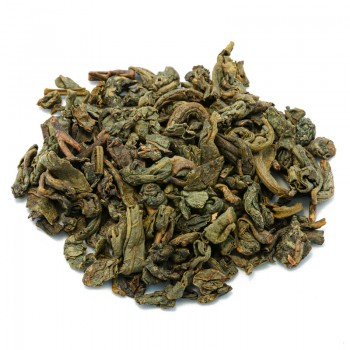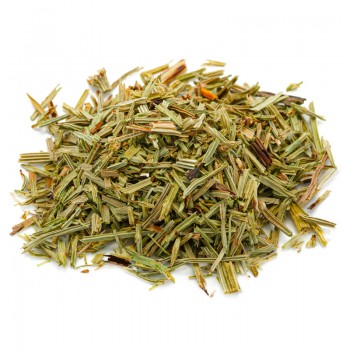This pumpkin-shaped fruit is native to tropical climates, and is known for its beneficial characteristics, mainly due to the content of hydroxycitric acid (HCA) , widely used in herbal medicine and medicine.
The best known property of garcinia cambogia is to promote weight loss and provide antioxidant benefits, thanks to the source of compounds such as calcium, phosphorus, riboflavin, niacin, iron and thiamine.
Fruits of Garcinia Cambogia: properties and benefits
In terms of benefits for weight loss, there are various characteristics of garcinia cambogia due to the presence of hydroxycitric acid in the peel of the fruit.
It is a rare acid in nature, known in studies for its ability to reduce the sense of hunger and help eliminate excess fat.
First of all, its consumption can promote a decrease in appetite, since it makes meals more filling.
The hydroxycitric acid in garcinia cambogia increases the level of serotonin , the hormone that is activated only when the stomach is full. Serotonin signals to the brain that you no longer need to eat food, and therefore its stimulation can make you feel full sooner, with a reduced appetite in case of nervous hunger.
Also the hydroxycitric acid in this fruit helps block the levels of an enzyme, ATP citrate lyase, involved in the formation of fat cells from carbohydrates.
The synthesis of cholesterol and other lipids is thus regulated, helping to reduce fat in the body.
This is an important factor in facilitating weight loss, combining the use of garcinia cambogia with a diet to lose weight.
In addition, garcinia cambogia is studied for its ability to also act on the metabolism of carbohydrates, and help in weight loss. It can improve metabolism by acting on the intestinal enzyme alpha-glucosidase and the pancreatic enzyme called alpha-amylase.
Always acting on the synthesis of fatty acids, garcinia cambogia can help reduce the amount of fat in the blood, regulating cholesterol levels. A beneficial function for blood pressure and cardiovascular risks.
These functions create indirect benefits on the liver, in the process of synthesis and disposal of fat. Again as a reflection of these advantages on the liver and metabolism, garcinia cambogia laxative properties.
Among the most evident benefits of garcinia cambogia, moreover, there is the high diuretic value, suitable for a purification action from toxins and excess salt in the body.
The hydroxycitric acid compound so abundant in garcinia fruits helps to counteract the formation of kidney stones, as it inhibits the growth of calcium oxalate crystals.
This plant is also considered an excellent energizer, and for this reason garcinia cambogia herbal tea is taken as a supplement to improve energy levels during our activities.
Due to its vitamin C content, it is also considered good for supporting the immune system, and preventing colds.
We mentioned serotonin, the so-called happiness hormone, which garcinia cambogia is able to increase. The positive effects on good mood and against stress and anxiety derive from this function.
HCA acts as a natural mood regulator, and we know that low serotonin levels can lead to anxiety, dejection and sleep disturbances.
Origins and History of cultivation
Garcinia cambogia is originally from Indonesia, but in ancient times it was also found in central and western Africa, in Indonesia and India and in Southeast Asia.
For many years the peel and pulp of this fruit have been used in Asian countries as a food seasoning and preservative. In addition to being a spice also used for the preparation of curry in traditional cuisine, garcinia was used as a natural remedy.
According to Indian Ayurvedic medicine, it was a cure-all for stomach pain, since at
supports digestion properly. In folk medicine it was used for the treatment of indigestion, for stomach ailments and rheumatism, as well as for eliminating intestinal worms and calming dysentery.
Today it is best known for reducing appetite and inhibiting the absorption and synthesis of fats. The peel of the fruit contains the chemical hydroxycitric acid, which is used in the pharmaceutical industry.
Plant and Flowers
Garcinia gummi-gutta is one of several closely related Garcinia species of the Clusiaceae family of plants.
The plant is also known as Malabar tamarind . It has a thin bark and fruits that are similar in size to orange and grapefruit.
Its appearance is that of a small yellowish pumpkin - green when unripe, while when ripe, its color becomes reddish, orange, yellow and brown.
The color may change when the skins are dried, in preparation for storage: they become dark brown or black.
Nutritional values of Garcinia Cambogia
The most beneficial active ingredients of garcinia cambogia are anthocyanins, vitamin C, hydroxycitric acid (HCA), and lactones derived from hydroxy acids.
The peel of garcinia fruits also contains carotenoids, flavonoids, polysaccharides.
How to use Garcinia Cambogia in herbal tea
The infusion of Garcinia Cambogia is obtained by putting in a cup (250 ml), about 3-5 grams of the dried fruits for the herbal tea cut, with water at 100 ° C.
Leave to infuse for 8 to 10 minutes, before drinking the herbal tea.
Add honey or sugar if desired.
Garcinia Cambogia: side effects and contraindications
This plant and its components appear to be safe for most people.
In any case, for the purpose of slimming, it is recommended to take a month continuously, with a break of at least a week, and which in any case does not exceed 3 continuous months.
In some people, sensitive to its components, the fruit in herbal tea of Garcinia cambogia can cause nausea, headache and digestive system disorders.
Garcinia is not recommended during pregnancy and breastfeeding, nor for children.

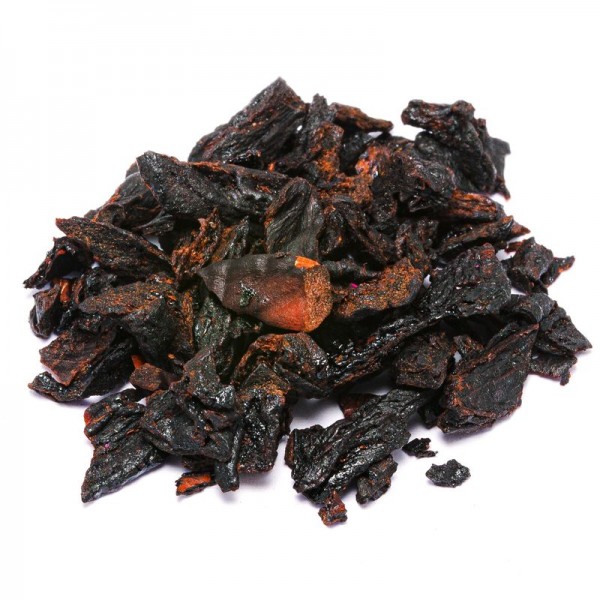









 No reward points for this product.
No reward points for this product.

